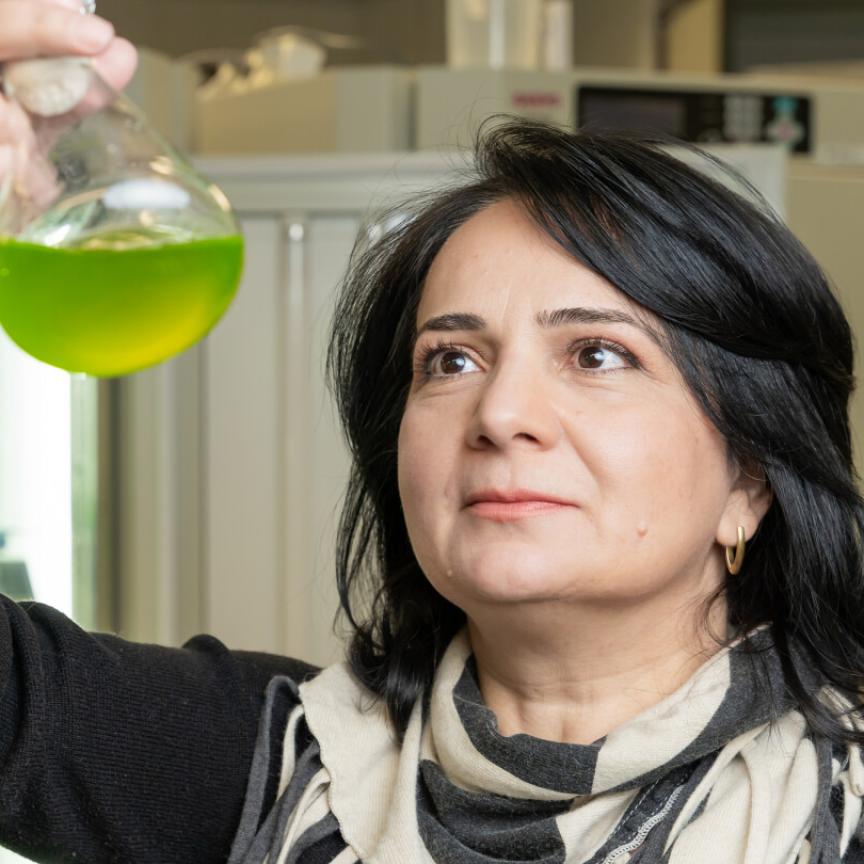For Verena Wippo, Laser Zentrum Hannover’s Group leader for the Composite Materials in the Department for Production and System Technology, this year’s Laser World of Photonics is all about exploring new laser sources, scan heads, and process monitoring technologies.
Particularly, Wippo is looking for new solutions for optimising the processing of carbon fibre-reinforced plastics (CFRP) for producing aerospace parts, where much of her group’s work takes place.
“We are really looking for new nanopulse laser sources in the near-infrared,” she told Electro Optics. “These are really good for processing CFRP due to their good quality and short processing times, which is really important if you want to bring the application into industry.”
In addition to sources in the near-infrared, Wippo is also interested in exploring the increasing power available from visible laser sources – those operating in the blue and green wavelengths.
“These higher powers lead to shorter processing times, which opens opportunities for processing a wider range of materials, not only composites,” said Wippo. “As a result, we are now considering trialing these lasers for processing all different kinds of applications, which we haven’t yet explored.”
Laserline is currently showcasing a new 4kW version of its LDM Blue laser at Laser World of Photonics this year, while Nuburu is exhibiting its newly released BL-1000-F, which expanded its BL-product line from 250W to 1kW. This increase in power enables significantly more energy-efficient and faster processes in both welding and additive manufacturing, particularly for reflective metals such as copper.
Wippo explained that visible wavelength lasers could be particularly beneficial when removing the plastic matrix materials often overlaying CFRPs. “When you look at the transmission curve of the plastics used for these matrix materials, they are lower in the blue or green wavelengths compared to infrared,” she explained. “This could lead to faster, more efficient processing when using these visible sources.”
In addition to exploring new laser sources, Wippo and her colleagues have identified that having high laser power alone is not enough to address the demands of CFRP laser processing.
“We need a really short interaction time between the material and the laser radiation, and so we are really hoping for much faster scanning systems, but these are proving quite challenging to find,” she said. “There are not many scanners on the market which offer the speeds we are looking for – we are looking for exceptionally high scanning speeds that can work with even higher powers than we are currently using.”
As a result Wippo and her colleagues are frequently in contact with scan head providers.
“Much of what I do at conferences is catch up with previous project partners to see what they have been working on and whether there’s potential for that technology to work with any of our current or future projects,” said Wippo. “This is why I love going to conferences and trade shows. I also listen to many metal processing presentations, which while this isn’t CFRP processing, we might see similar problems to those we are currently experiencing, or a really nice solution where I think ‘that’s interesting, I could use that too!’”
Lastly, Wippo is taking full advantage of the co-located Automatica trade show to explore imaging solutions for process monitoring.
“We had one project using neural networks to predict laser parameters for welding 3D printed plastic parts,” she said. “We have tested this and it has already worked for the materials used in the project, but it needs more work. We are therefore exploring not only new camera technologies for process monitoring, but also programs that aid us in building these applications.”
Process monitoring continues to be a hot topic for the aerospace industry, Wippo continued, as aerospace manufacturers need to know everything about their process data, allowing them to achieve maximum consistency and repeatability between parts.
“It also allows them to know whether their parts are good/bad without extensive testing, Wippo concluded. “When we can correlate camera images with the quality of their parts they are always very pleased!.”
Verena Wippo is a member of Electro Optics’ Photonics 100. For more information visit: https://www.electrooptics.com/thephotonics100


